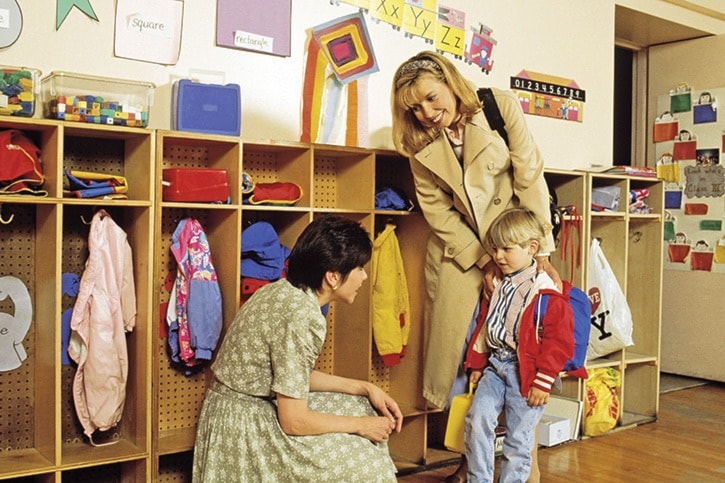For many children starting Kindergarten, doing so is a sign they are growing up and moving into the next stage of their young lives.
This time can bring a lot of emotions to the surface, both for children and parents.
“It’s exciting, it’s stressful, it’s great for everybody,” says Sue Ottenbreit, a Kindergarten teacher in Greater Victoria for the past eight years. “I think the big piece is it’s exciting to see the growth happening.”
 While moving into the structured routine of full-day Kindergarten can be a huge step for kids and parents, she says, “with (child) number two or three, it becomes a little less intimidating. Parents want to know that their kids are going to succeed, and those first days are pretty important to everybody. We try to do our best to make people feel welcome.”
While moving into the structured routine of full-day Kindergarten can be a huge step for kids and parents, she says, “with (child) number two or three, it becomes a little less intimidating. Parents want to know that their kids are going to succeed, and those first days are pretty important to everybody. We try to do our best to make people feel welcome.”
It’s clear that every child develops academic skills at their own rate. So rather than expecting children to enter Kindergarten with rudimentary reading and writing skills, teachers look more initially for their level of independence around the basics, Ottenbreit says, such as the ability to learn things like where to hang their coats and put their shoes.
“That willingness to learn to be independent is huge, it leads to confidence. (It’s) things like the ability to listen, to truly be able to hear what somebody else is saying – not just the teacher, but the other students in the class.”
Ensuring your child is ready to face the rigors of Kindergarten is a process parents can start as soon as they begin exposing them to everyday life. By giving them opportunities to explore the world and themselves, parents can help make entering a structured classroom situation with more than 20 girls and boys around their age not such a shock to their system.
“What I would say to parents is help the children encounter people in different situations,” Ottenbreit says, noting that preschool and daycare usually have a ratio of one adult for every 10 children.
As for a teacher’s expectations, especially early on, they’re usually limited to the children getting to school on time, getting settled in fairly quickly and ready to learn, she says.
“We give lots of time at the beginning for people to move into a new routine. That’s the one thing about Kindergarten, we see kids coming from different places and with different abilities and experiences. Parents need to know their kids are going to be tired, a little bit crabby, more hungry. At about week three, there will be the meltdown and the tired days and those kinds of things.”
While some of those scenarios might be tricky to manage, especially for busy parents, it’s all part of the change that comes with personal growth.
